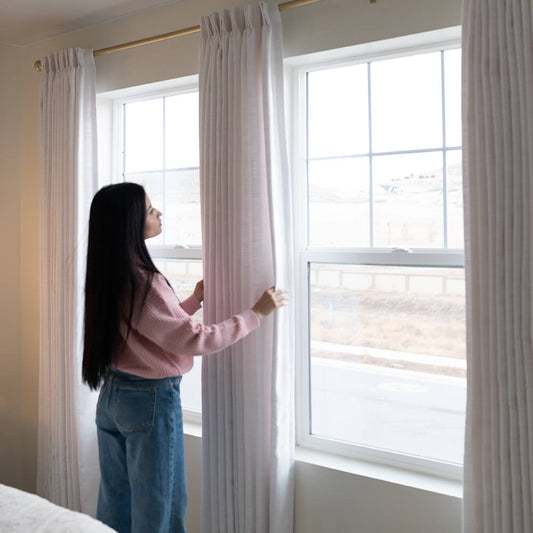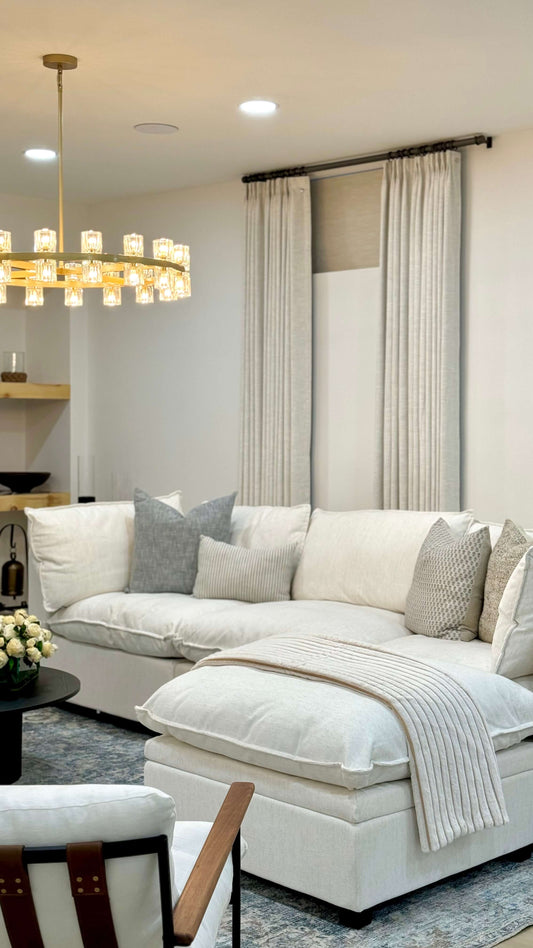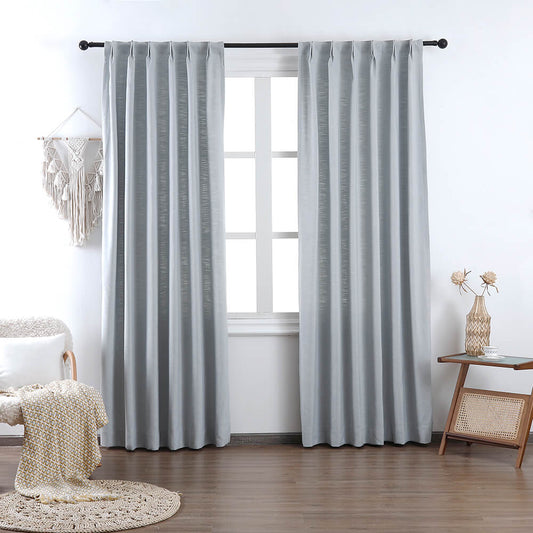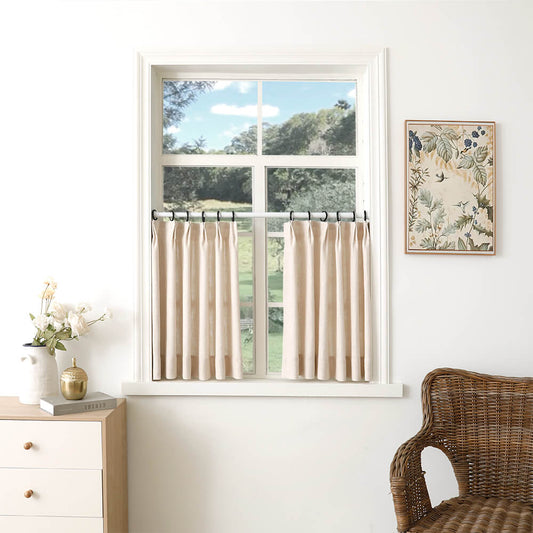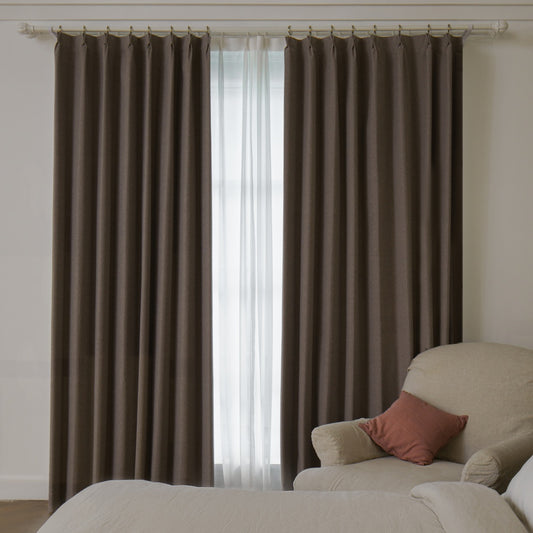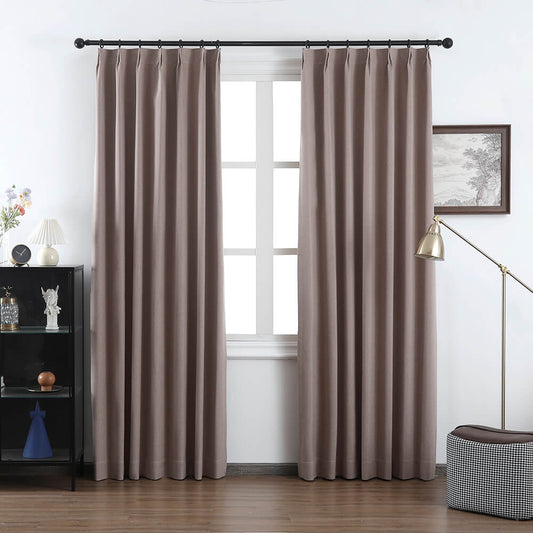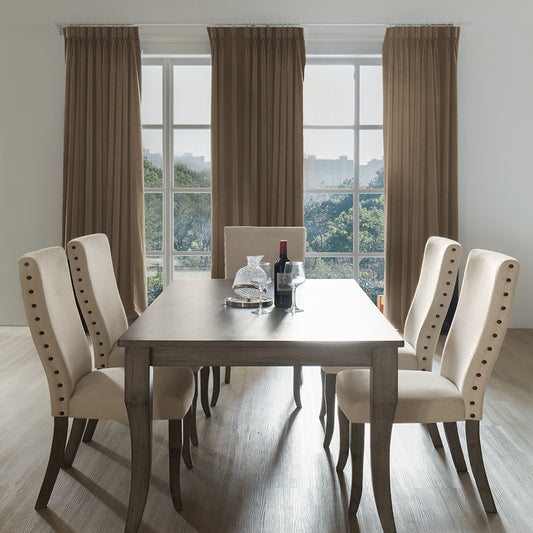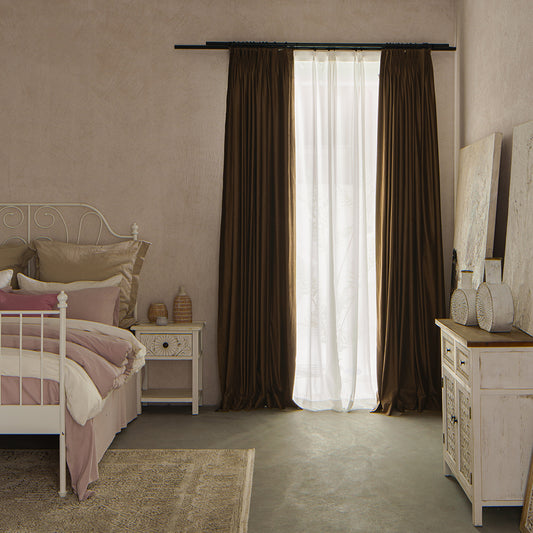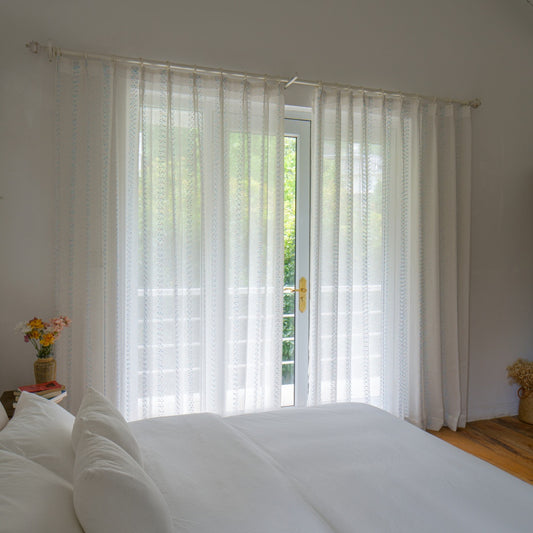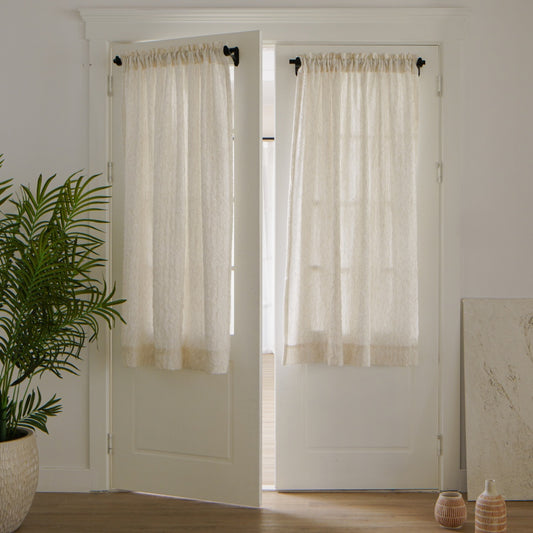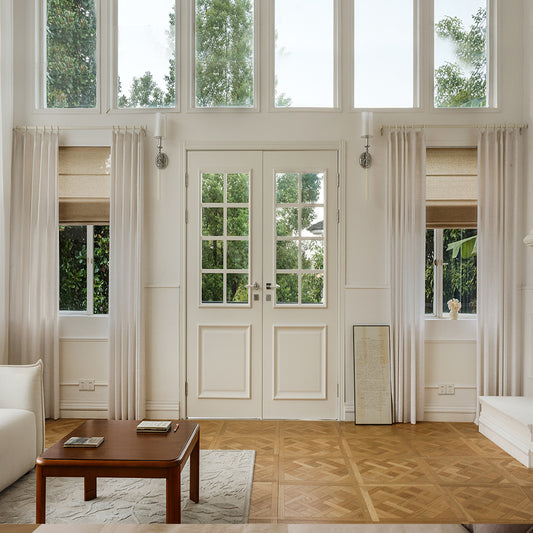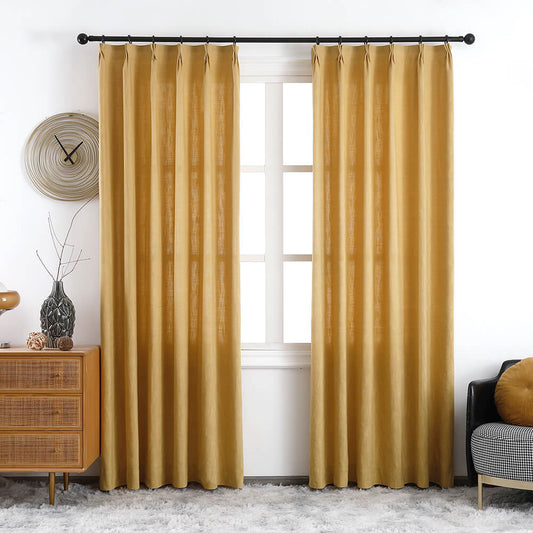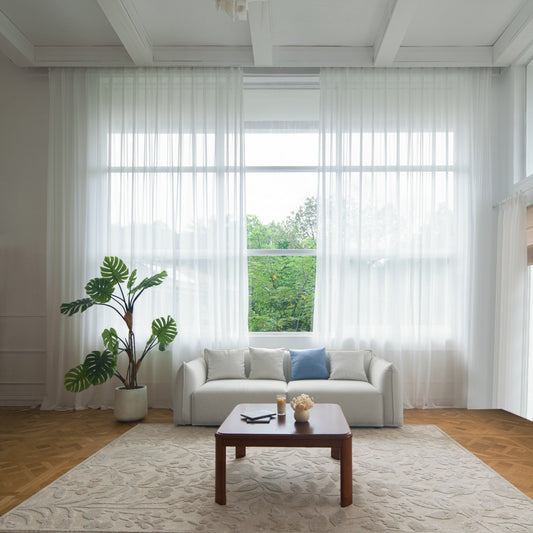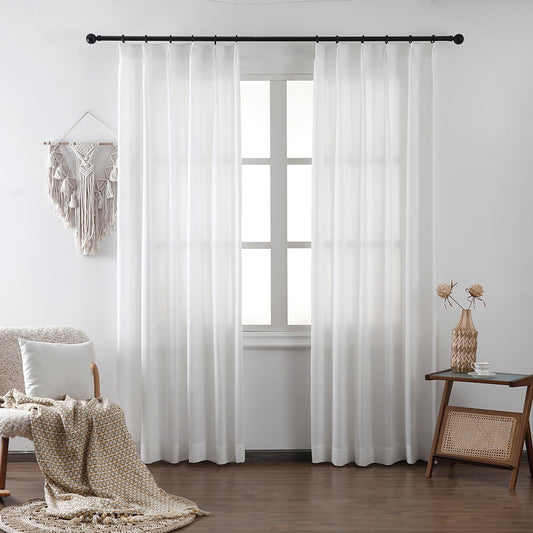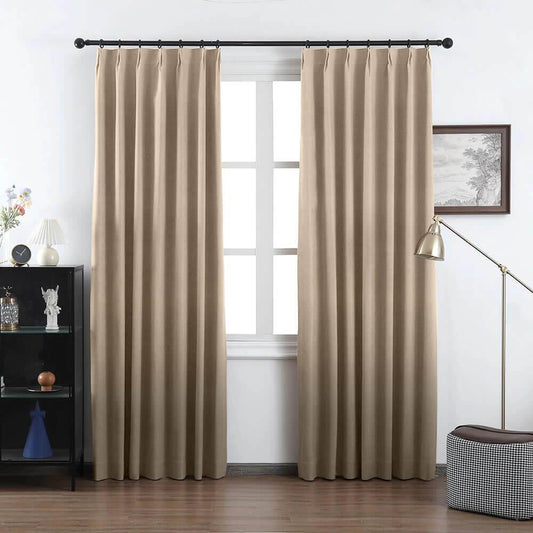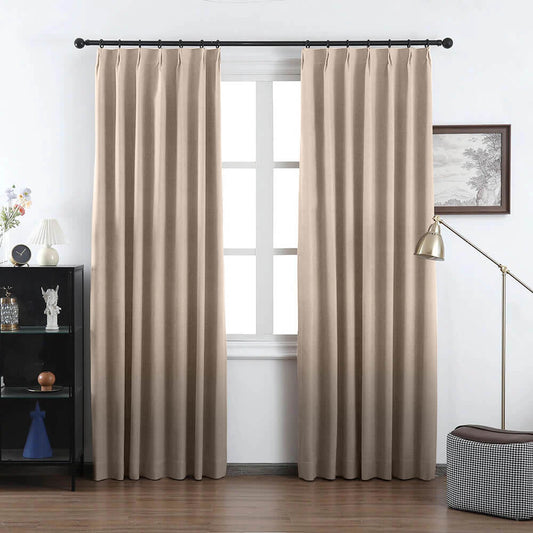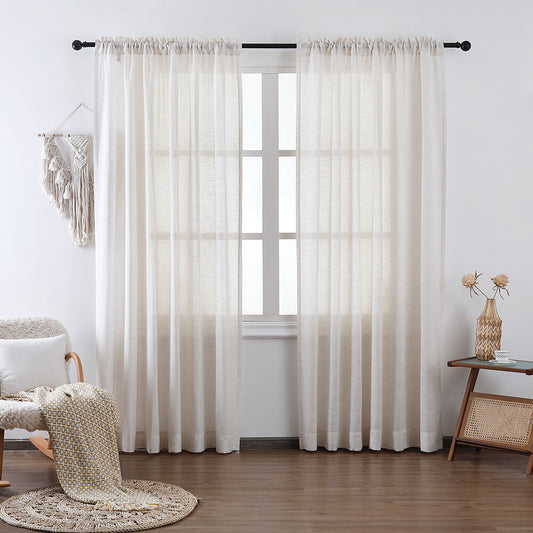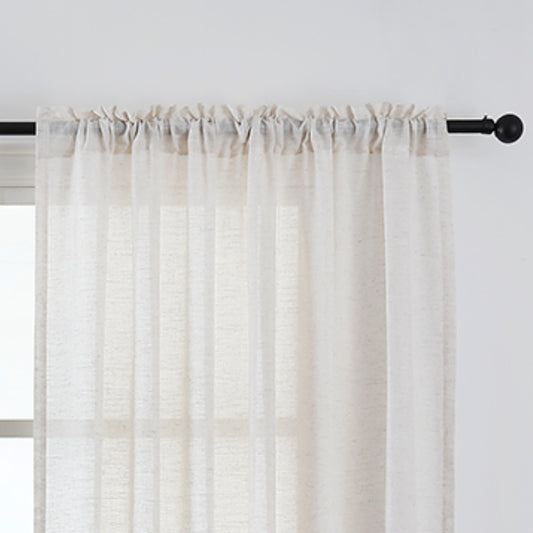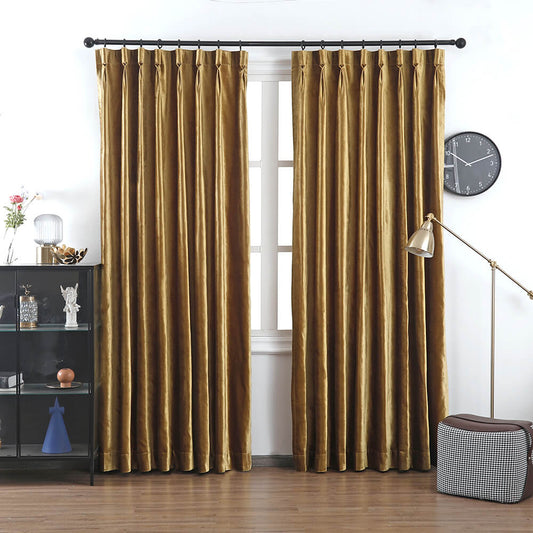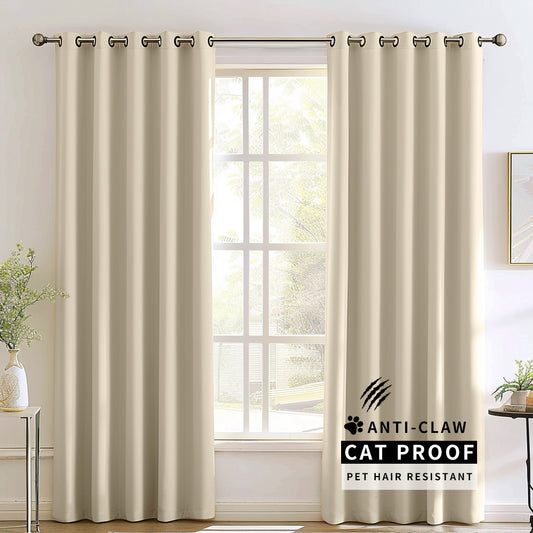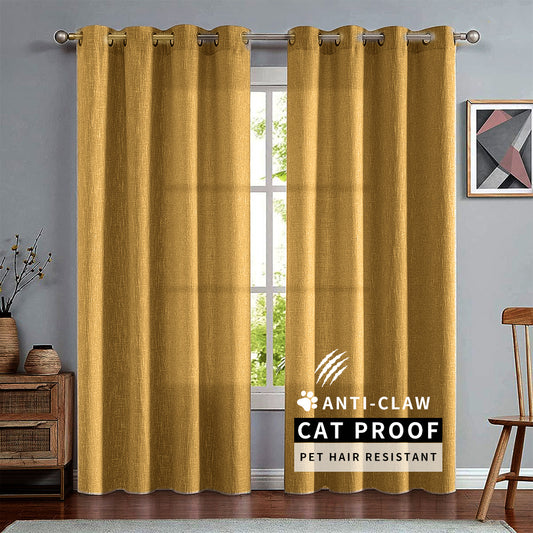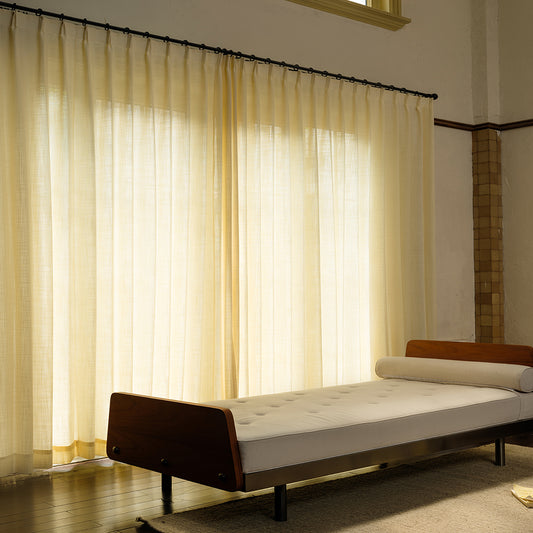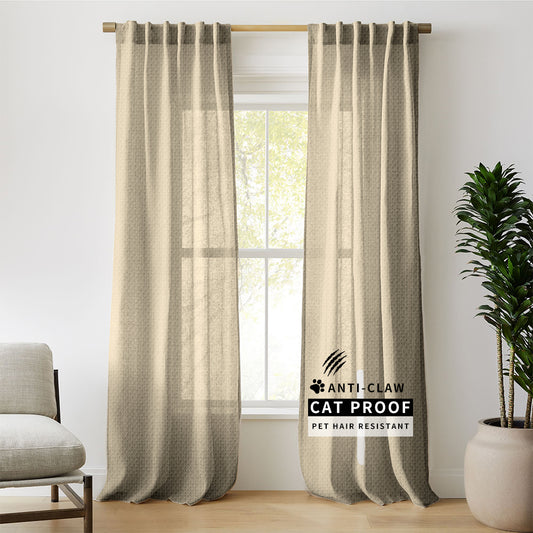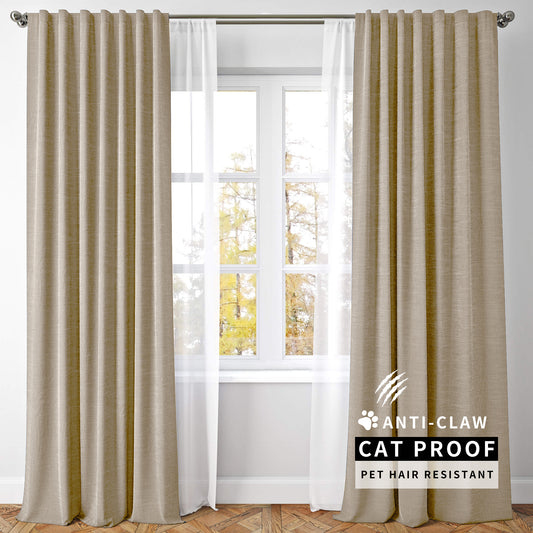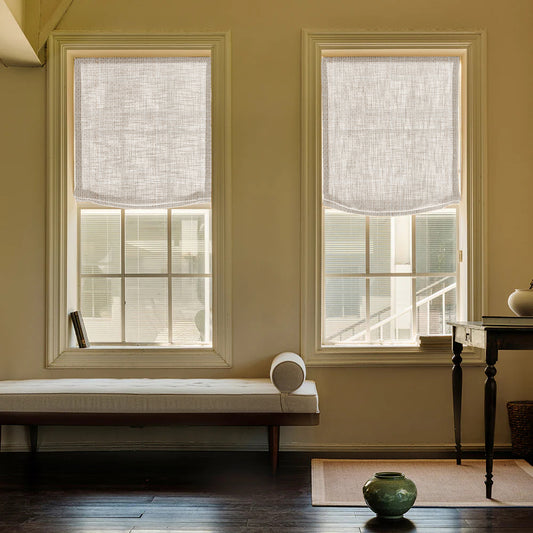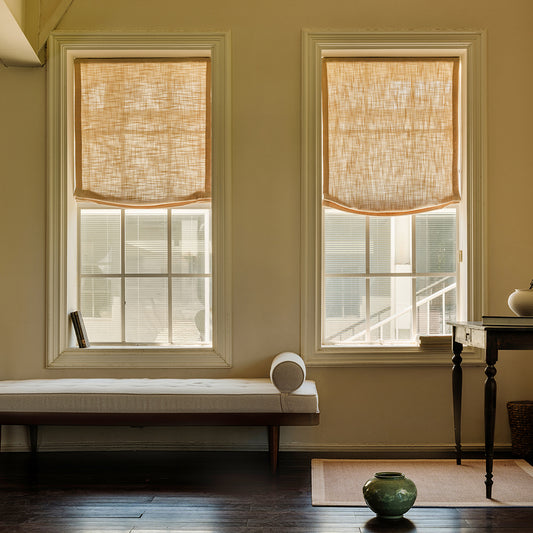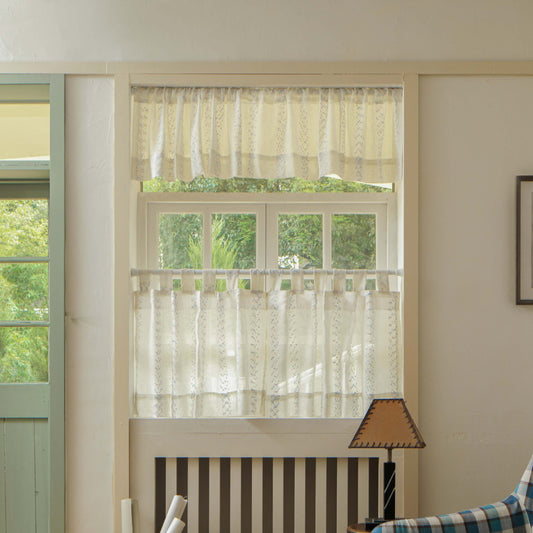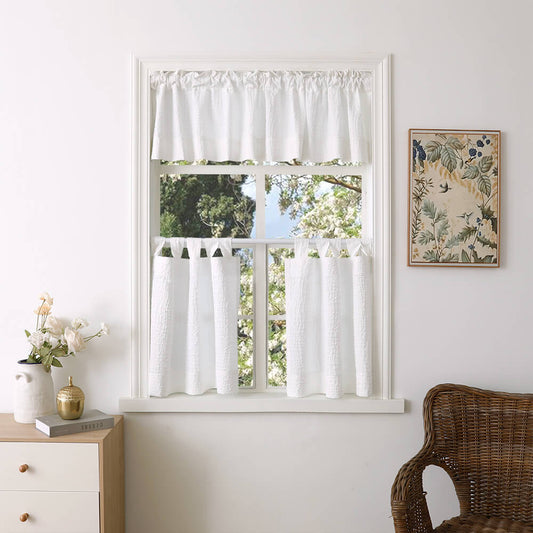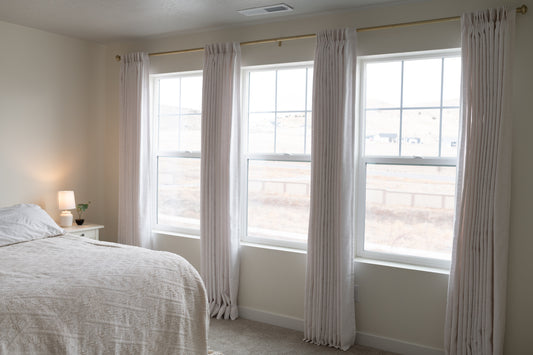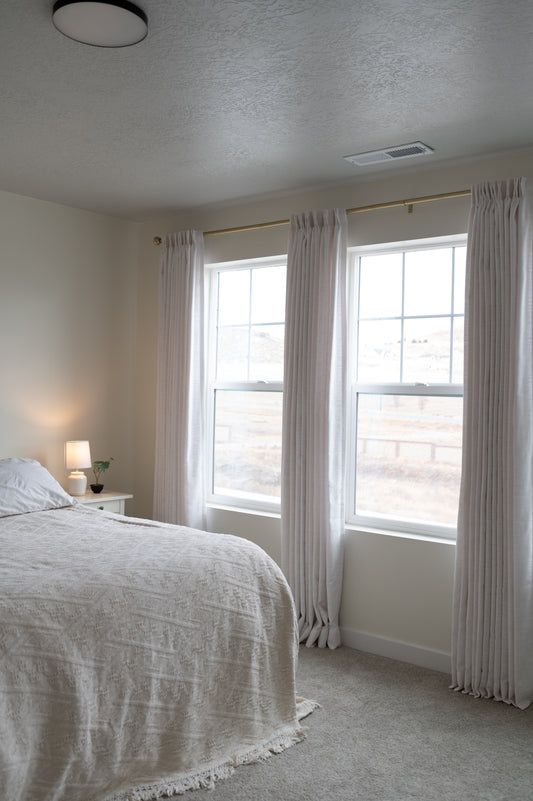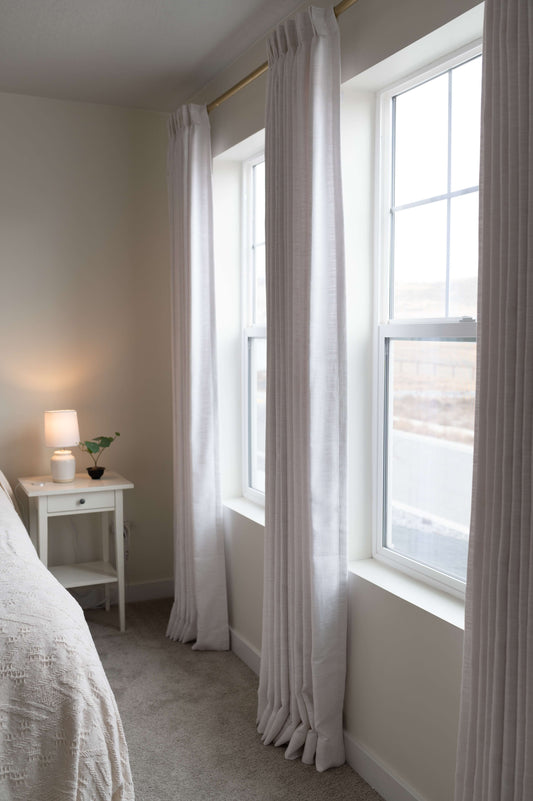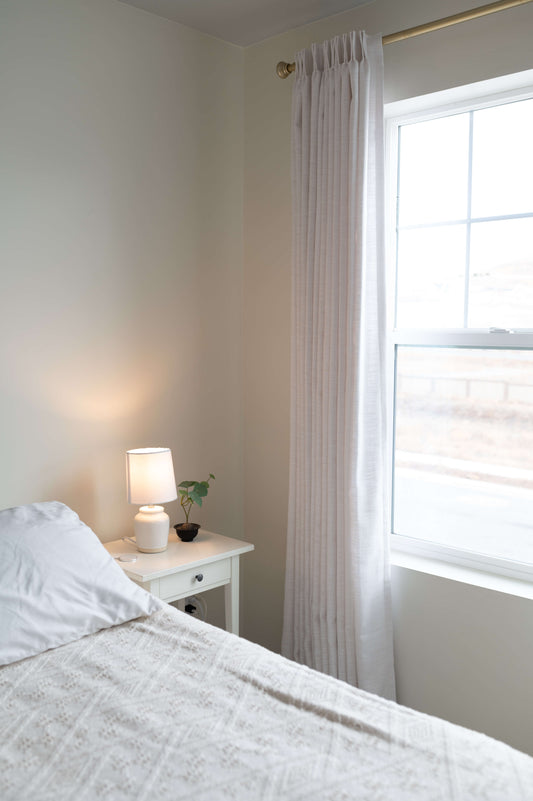How to Calculate the ROI of Investing in High-Quality Curtains
Purchasing premium curtains is not just a decorative choice but also a calculated commercial one. For distributors and curtain vendors, knowing the return on investment (ROI) for luxury curtains is absolutely vital. Calculating ROI enables you to evaluate the profitability of your investments, create reasonable sales targets, and maximize operational efficiencies in marketplaces growing in competitiveness and consumer expectations. This article offers a thorough, detailed, step-by-step guidance catered for curtain industry professionals so you may make wise selections enhancing your bottom line and promoting business expansion.
We will go over the key ideas underlying ROI in this all-inclusive guide, dissect the several cost elements and income sources, and offer doable techniques and measurements to find the ROI of premium curtains. Whether you are reviewing your present inventory plan or a new product line, this page is meant to provide you with practical ideas and tested methods for best profit maximizing.
Appreciating the ROI Concept for Curtains
What is ROI, and why does it matter for curtains?
Return on investment, or ROI, gauges, in relation to cost, the profitability and efficiency of an investment. When considering high-quality curtains, ROI shows the financial benefits of your investment in advanced manufacturing techniques, premium materials, and creative designs. Determining ROI helps you to evaluate whether the more upfront expenses related to premium curtains result in improved market positioning, better profitability, or larger sales.

Important Notes:
Investment Evaluation: Relative to their cost, ROI offers a clear image of the return your premium curtain investments provide.
Knowing ROI helps you make strategic decisions about whether to change your marketing and sales plans or increase your high-quality curtain inventory.
Understanding your ROI helps you to spot possible hazards and opportunities for cost control, thereby guaranteeing that every dollar spent adds to the general profitability.
Important Drivers Affecting Curtain ROI
Premium Curtain Investment's Cost Components
Purchasing premium curtains calls for numerous cost factors that need consideration:
Material costs:
Often costing more than normal choices include premium fabrics, colors, and finishing materials. But their exceptional beauty and durability will help to offset the additional expense by drawing more upscale customers.
Cost of Production:
Excellent curtains need for exact production techniques. These cover complex machinery, skilled manpower, and exhaustive quality control practices. These elements lower the incidence of flaws and returns even if they increase manufacturing costs.
Distribution & Logistics:
For big orders or custom installations especially, timely and effective curtain delivery is absolutely vital. Minimizing delays and preserving the integrity of the product throughout transportation depends on consistent investments in dependable logistics and storage options.
Sales vs Marketing:
Sometimes premium goods call for a focused marketing plan. The whole investment has to be considered including the expenses related to trade show attendance, internet campaigns, and upscale promotional items.
Profit Sources from Premium Curtains
Excellent curtains have numerous income sources that might help to increase return on investment:
Higher selling price:
Premium curtains' better quality, design, and longevity mean more retail value. Higher profit margins per unit sold can follow from this.
Client allegiance and repeat business:
Contented consumers who understand the need of quality are more likely to refer others and make repeat business, so increasing long-term income.
Differentiation of the Market:
Presenting premium curtains distinguishes your company from rivals and helps you to attract niche markets and land contracts with upscale interior designers and contractors.
Services with Added Value:
Offering after-sales support, installation advice, and customizing choices will help to generate extra income and improve client happiness.
Methodologies for Calculating High-Quality Curtains' Return on Investment
First, specify your investment expenses.
Start by breaking down every expense related to the luxury curtains purchase. This ought to comprise:
Direct Material Costs: Fabric price per yard/meter; dye price; extra ornamental components cost.
Labor and Production Costs: Manufacturing-related expenses including overhead for quality control and labor.
Transportation, warehouse, and distribution costs fall under logistics and handling.
Sales and marketing expenses include advertising, internet marketing, and costs of promotional events.
Installation services, warranties, and after-sales assistance comprise miscellaneous costs.
Making a thorough spreadsheets including these line items will show a clear overall investment amount.
Second step: Project income generating.
Project then the income the selling of the premium curtains could bring. Think on:
With consideration for possible discounts and bulk sale incentives, find the average selling price (ASP) for the curtains.
Project the quantity of units you hope to sell over a given period. Improve accuracy using market trends and past data.
Consider extra income from value-added features, installation services, and customizing costs.
Step 3: Determine the Time Frame
Choose the length of time you will be computing the return on investment. Typical timesframes are quarterly, annual, or over the lifetime of the product. Comparative studies depend on consistency in your analysis period.

Step 4: Calculate Net Profit
Subtract the total investment costs from the total projected revenue over the chosen time frame:
Step 5: Compute the ROI Percentage
Finally, express the net profit as a percentage of the total investment:
This proportion guides your decision on whether the premium curtain line is financially feasible and helps you ascertain the return on investment efficiency.
ROI Calculations for Premium Curtains
Analyzing Profit Margins
Evaluating return on investment depends critically on profit margins. Regarding premium curtains, you should give thought to:
Expressed as a percentage, the gross margin—the difference between the selling price and the cost of goods sold—COGS—is
After considering all running expenditures, taxes, and overhead, net margin is the general profitability.
Find the lowest sales volume needed to pay all expenses and begin making money with break-even analysis.
assessing client lifetime value (CLV)
The Customer Lifetime Value (CLV) statistic approximates the whole income a one-time client is predicted to bring over their engagement with your company. Because of recurrent business and premium pricing, high-quality curtains typically result in better CLV. Including CLV into your ROI computation can help you understand long-term viability.
Evaluating Turnover in Inventory
Maintaining a good ROI depends mostly on effective inventory control. Measures of inventory turnover track the speed with which your curtain stock is sold and replenished. A higher turnover rate suggests effective stock control and lower holding costs, hence improving ROI.

Including intangible gains
Beyond just statistics, take intangible advantages like:
Improved customer reviews and word-of-mouth referrals are common results of quality products.
Premium curtains will improve your brand's impression and draw more upscale customers.
Investing in premium products might result in less returns and less customer service problems.
Though more difficult to measure, these intangible elements greatly affect the total return on investment and ought to be considered in strategic decisions.
Case Study: An Ex hypothesious ROI Study
Background Information
Consider a curtain distributor who chooses to make investments in a fresh line of luxury curtains. The investment covers sophisticated manufacture, premium materials, and focused marketing campaigns. The distributor projects better profit margins and more sales volume.
Investment Analysis Breakdown
Material expenses come at forty thousand dollars.
Production expenses: thirty thousand dollars.
Distribution and logistics cost $10,000.
Sales and marketing equal $20,000.
Miscellaneous Payments: $5,000
Total Investment: $105,000
Revenue Projection
Average Selling Price per Unit: $250
Estimated Units Sold in One Year: 600
Additional Revenue (Customization and Services): $15,000
Total Revenue: (600 × $250) + $15,000 = $165,000
ROI Calculation
-
Net Profit:
-
ROI Percentage:
This hypothetical instance indicates that a smart investment in high-quality curtains may generate a ROI of over 50%, making it a profitable business when managed well.
Tools and Strategies for Optimizing Curtain ROI
Utilizing Financial Software
Invest in sophisticated financial planning and analytics tools. Software solutions can help you track expenses, anticipate revenue, and continuously update ROI calculations as market conditions change. These tools deliver real-time information that are vital for quick decision-making.
Market Research and Trend Analysis
Regular research helps you to stay current with consumer tastes and market changes. Online surveys, trade exhibits, and industry publications will help you compile information that might improve your sales projections and change your pricing policies. Your ROI calculations will be more accurate the more exact your market views are.
Lean Inventory Control Program
Use lean inventory control techniques to lower waste and control holding costs. Just-in- time (JIT) inventory systems help to simplify processes and guarantee that your premium curtains are delivered quickly, therefore lowering storage costs and increasing turnover.
Communication and Supplier Relationships: Negotiating
Develop close ties to vendors to guarantee competitive raw material and production service costs. Negotiating good terms will help you to increase profit margins and lower your total investment expenses, therefore directly improving your ROI.
Constant Education and Process Enhancement
Make continuous training investments for your workers in sales and operations. Improving staff knowledge guarantees that everyone from marketing to logistics is in line with best practices, thereby maximizing the returns on your investments.
Solving Typical Problems Calculating Curtain ROI
Variability in Cost Drivers
Variations in raw material pricing, labor rates, and transportation costs will cause high-quality curtain investments to vary in cost. To control these doubts:
Review your expense data often to ensure it is current.
Set aside some of your money in contingency funds to pay for unanticipated costs.
Use sensitivity analysis to model several situations to see how changes in cost affect general return on investment.
Precisely Projecting Income
Forecasting income and sales volume can prove difficult in a market undergoing change. To improve correctness:
Leverage historical data as the basis for your projections.
Change with consideration for seasonal fluctuations and present state of the market.
Experiment with several pricing and marketing techniques to find the most successful one in A/B testing.
Juggling Tangible and Intangible Rewards
Although financial measures are crucial, ROI also depends on intangible factors including brand recognition and consumer loyalty. To harmony these:
Create client feedback systems by means of questionnaires and reviews to measure degree of satisfaction.
Track how quality investments shape the impression of your brand on social media and online presence.
Include qualitative insights in your workshops on strategy planning to balance numerical ROI data.
Improving Investment Returns bywise Decision-Making
Strategic Product Diversification
Including a variety of premium curtain choices in your product line will assist you to appeal to different consumer groups. Think about providing several materials, colors, and designs that appeal to modern and classic palates. Apart from increasing sales volume, this diversification strengthens market resiliency.
Dynamic Pricing Plans
Use dynamic pricing strategies that mirror inventory levels and current market demand. Good items sometimes make sense for premium pricing during times of maximum demand. Change prices using real-time data to guarantee maximum earnings without offending consumers who are price sensitive.
Simplified Methodologies and Process Automation
Using automation in customer service, order processing, and inventory control will help to greatly lower running expenses. Simplifying these procedures helps you to free more resources for projects aimed at market expansion and quality enhancement, hence raising return on investment.
Customer Relationship Management (CRM) Investment
Strong CRM systems can offer insightful analysis of consumer behavior, therefore supporting customized services and focused marketing initiatives. Long-term connections help you not only improve repeat business but also the whole value proposition of your premium curtains.
Frequent Performance Inspections
Review your investments' performance often. Examine market conditions, consumer comments, and sales records to find areas needing work. These analyses guarantee that your ROI stays strong over time and let you rapidly change tactics.
Final Thought
For distributors and curtain vendors trying to get a competitive edge, figuring the ROI on high-quality curtains is a vital exercise. Understanding the cost elements, income prospects, and strategic value of premium products helps you to make wise decisions that increase profitability and support long-term expansion. From lean inventory control to dynamic pricing policies and exact cost analysis, every factor contributes to make sure your high-quality curtain investment pays off.
Let these ROI computations direct your operational enhancements and strategic planning as you negotiate a market growingly competitive. In the end, a thorough awareness of ROI opens the path for future success and market leadership in addition to helping you to maximize your present investments.
We would want you to review your present plans and take into account the possibility for better returns by wise premium curtains purchases. Ask questions to find out how these ideas might be customized to fit your company requirements and get more specific advice.
Commonly asked questions, or FAQs
One can find: What is ROI, and why should premium curtains consider it?
Return on investment, or ROI, gauges the relative profitability of your investment to its cost. Regarding premium curtains, it helps you determine whether the more expenses translate into more income and market distinctiveness.
Two. When computing the ROI of premium curtains, what main considerations should be taken?
You should consider direct material and production costs, logistics, marketing expenses, and extra income from value-added services. Crucially important are also inventory turnover and customer lifetime value.
3. How may the return on investment of my premium curtain purchases be raised?
Think about ways you might improve supplier terms, use lean inventory management, apply dynamic pricing, and fund advanced analytics and CRM technologies.
4. What technologies can aid with ROI calculation for curtain investments?
Valuable tools are market research tools, inventory control systems, and financial planning applications. Additionally very important insights come from regular performance assessments and sensitivity studies.
5. How do intangible benefits like brand reputation factor into ROI?
Though intangible, advantages including improved customer loyalty, market positioning, and lower return rates can have a big beneficial effect on general ROI. For a more all-encompassing picture, include these elements into your strategic assessments.
6. I should update my ROI calculations how often?
Especially if market conditions, cost structures, or sales volumes change, ROI should be routinely examined—at least quarterly or annually.
Understanding and using these techniques will help curtain distributors and dealers to properly evaluate the financial results of their high-quality curtain investments. The knowledge in this book is meant to assist you maximize your product offers, simplify processes, and finally stimulate notable profit increase. Using these ROI calculating methods can help you to get a competitive edge in the premium curtain market, so transforming your company strategy.
Please do not hesitate to get further information if you have more questions or would want to discuss customized strategies for maximizing your curtain investments. Making informed, data-driven decisions will help you succeed in this cutthroat market; let this book serve as your road map to increased profitability and consistent expansion.
